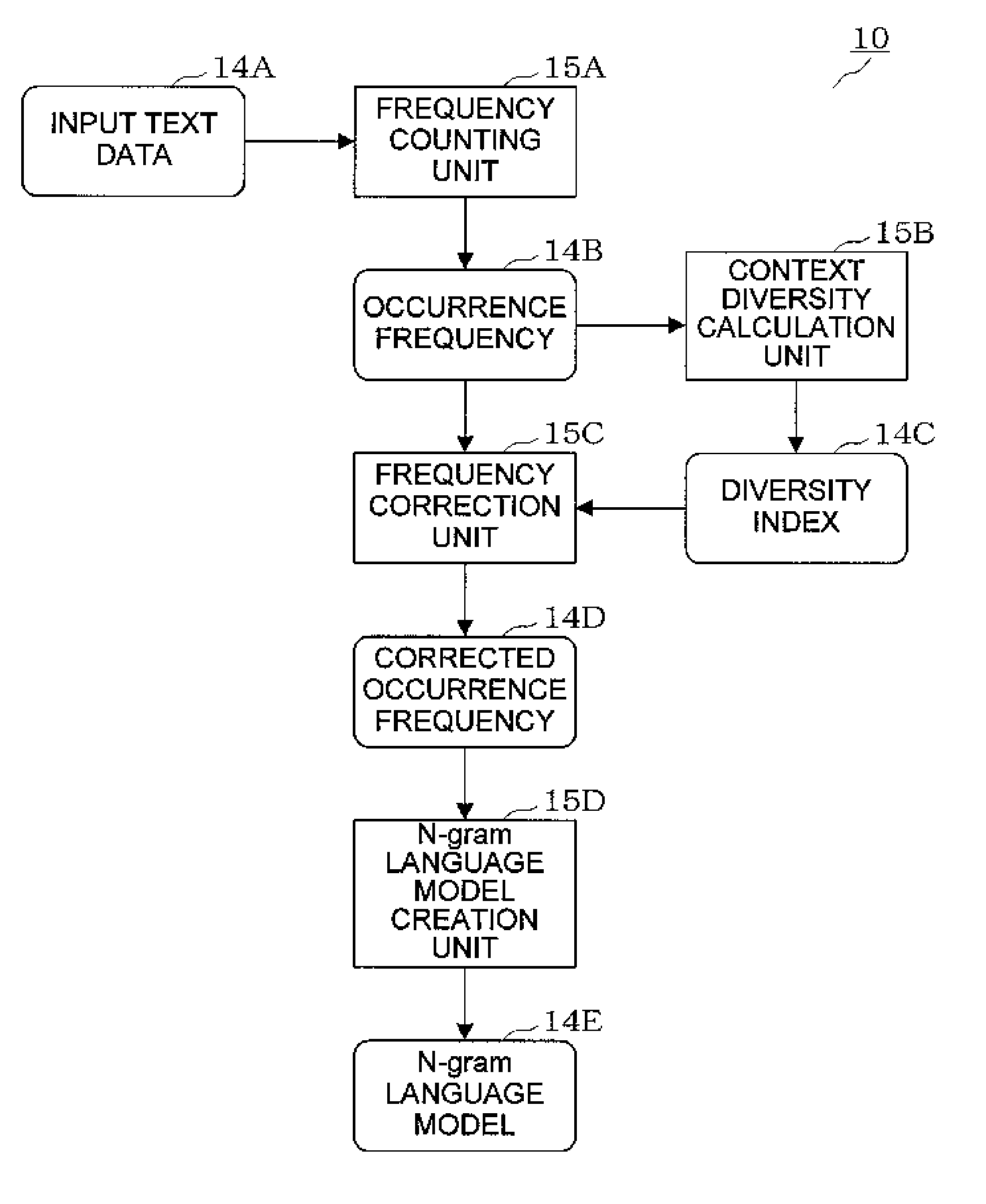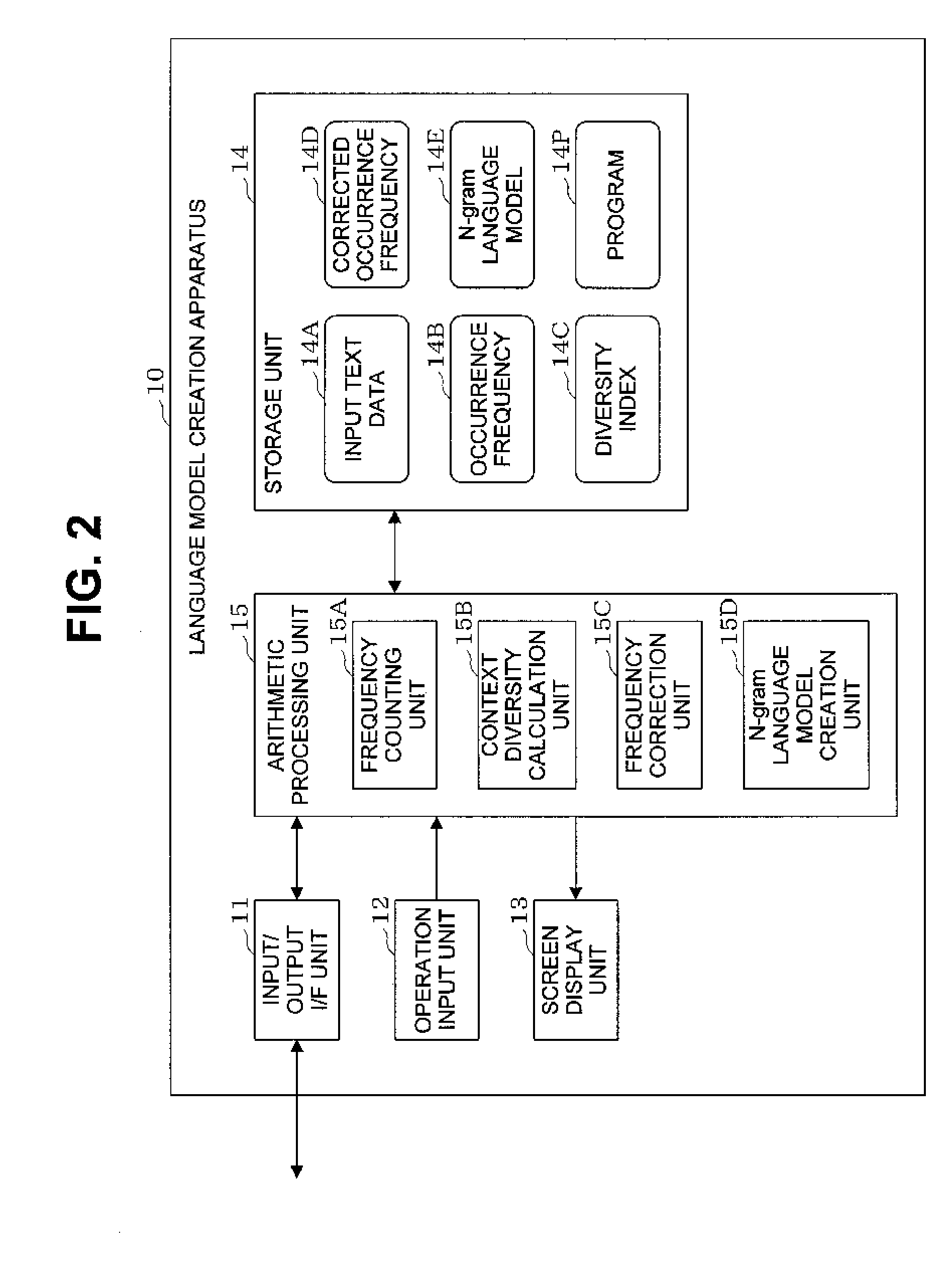Language model creation apparatus, language model creation method, speech recognition apparatus, speech recognition method, and recording medium
a language model and language model technology, applied in the field of natural language processing techniques, can solve the problem that the feature of data to be recognized in the purpose n-gram language model created in advance is not always appropriately represented
- Summary
- Abstract
- Description
- Claims
- Application Information
AI Technical Summary
Benefits of technology
Problems solved by technology
Method used
Image
Examples
first exemplary embodiment
Effects of First Exemplary Embodiment
[0096]In this way, according to the first exemplary embodiment, the frequency counting unit 15A counts the occurrence frequencies 14B in the input text data 14A for respective words or word chains contained in the input text data 14A. The context diversity calculation unit 15B calculates, for the respective words or word chains contained in the input text data 14A, the diversity indices 14C each indicating the context diversity of a word or word chain. The frequency correction unit 15C corrects the occurrence frequencies 14B of the respective words or word chains based on the diversity indices 14C of the respective words or word chains contained in the input text data 14A. The N-gram language model creation unit 15D creates the N-gram language model 14E based on the corrected occurrence frequencies 14D obtained for the respective words or word chains.
[0097]The created N-gram language model 14E is, therefore, a language model which gives an approp...
second exemplary embodiment
Effects of Second Exemplary Embodiment
[0134]As described above, according to the second exemplary embodiment, the language model creation unit 25B having the characteristic arrangement of the language model creation apparatus 10 described in the first exemplary embodiment creates the N-gram language model 24D based on the recognition result data 24C obtained by recognizing the input speech data 24A based on the base language model 24B. The input speech data 24A undergoes speech recognition processing again using the adapted language model 24E obtained by adapting the base language model 24B based on the N-gram language model 24D.
[0135]An N-gram language model obtained by the language model creation apparatus according to the first exemplary embodiment is considered to be effective especially when the amount of learning text data is relatively small. When the amount of learning text data is small, like speech, it is considered that learning text data cannot cover all contexts of a gi...
PUM
 Login to View More
Login to View More Abstract
Description
Claims
Application Information
 Login to View More
Login to View More - R&D
- Intellectual Property
- Life Sciences
- Materials
- Tech Scout
- Unparalleled Data Quality
- Higher Quality Content
- 60% Fewer Hallucinations
Browse by: Latest US Patents, China's latest patents, Technical Efficacy Thesaurus, Application Domain, Technology Topic, Popular Technical Reports.
© 2025 PatSnap. All rights reserved.Legal|Privacy policy|Modern Slavery Act Transparency Statement|Sitemap|About US| Contact US: help@patsnap.com



